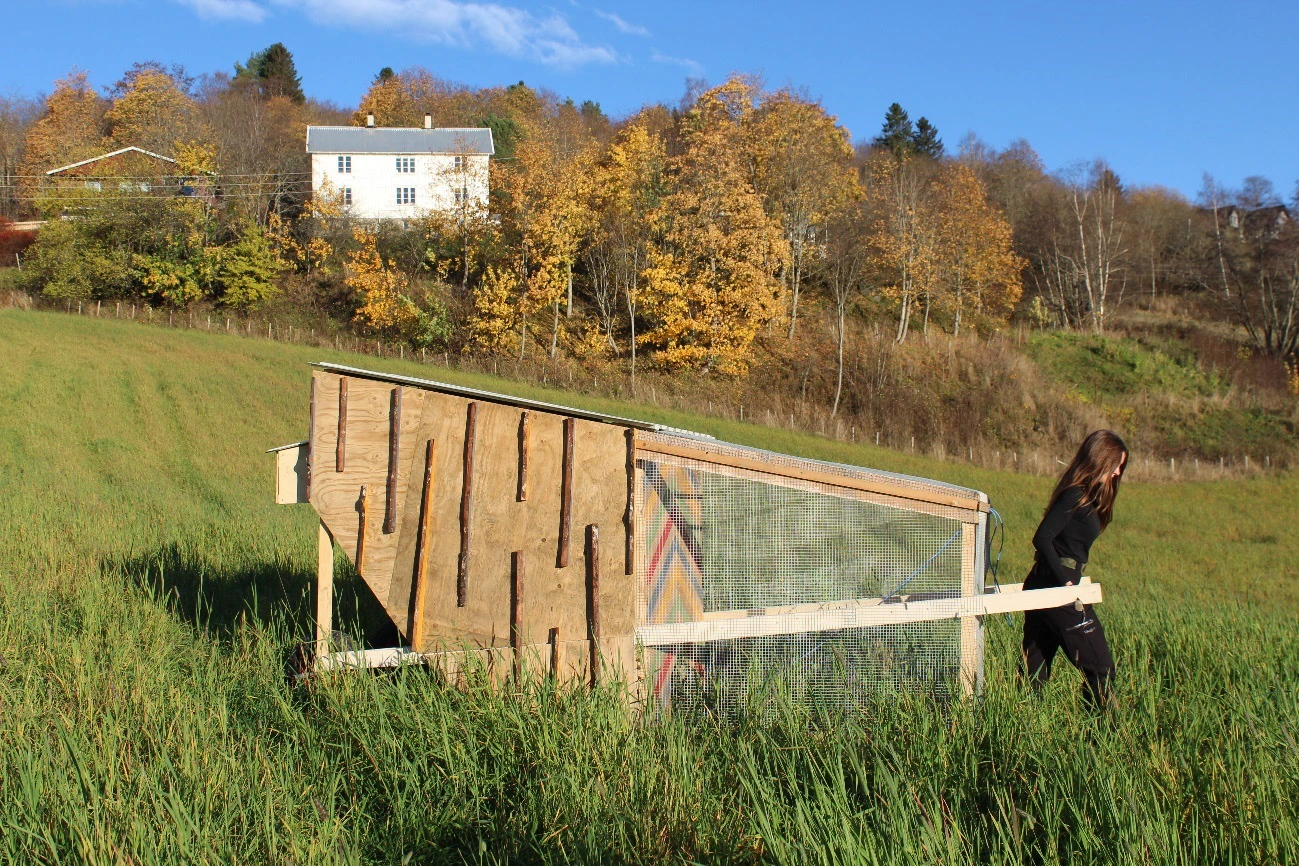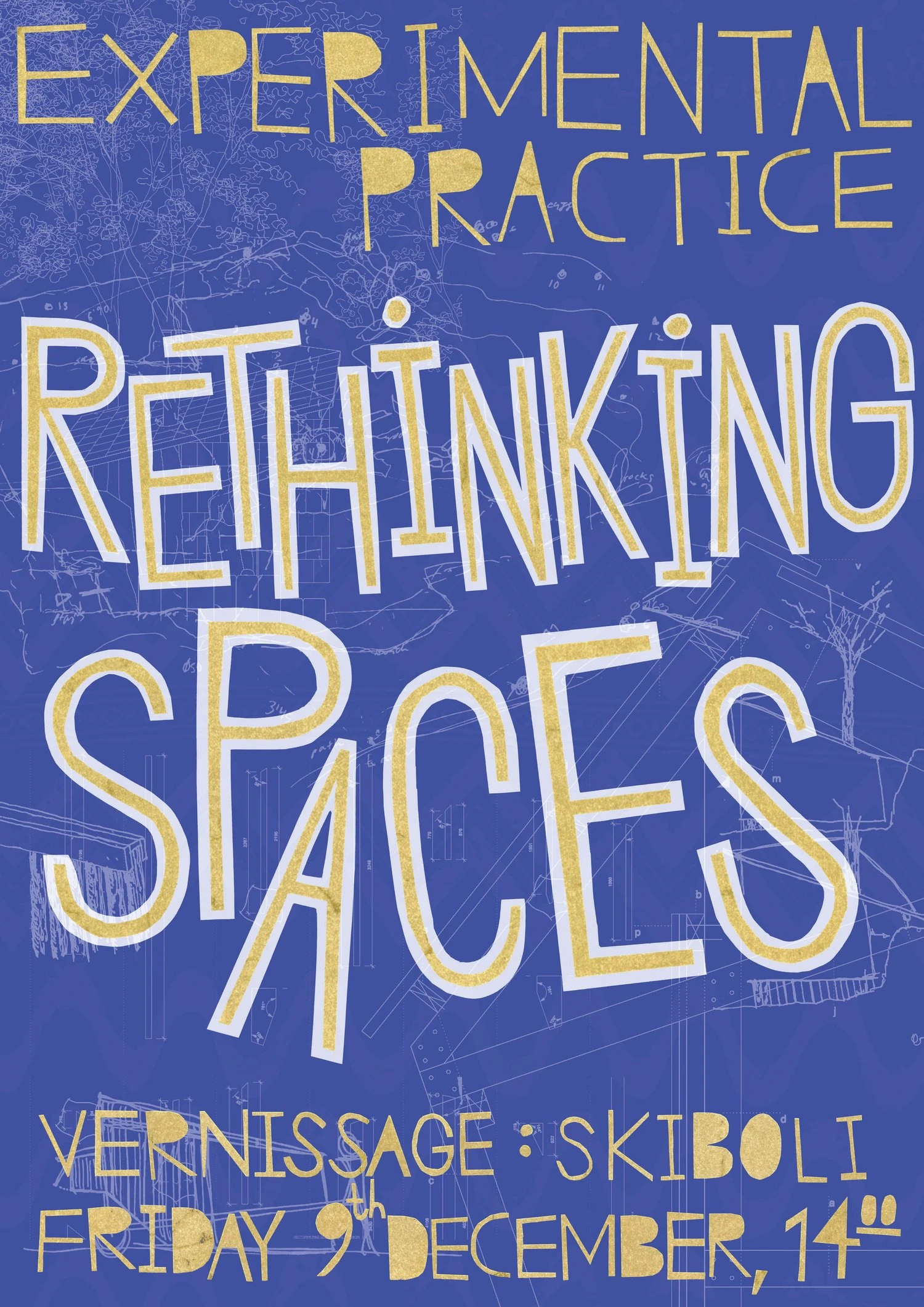2022 / Monsoon Sem /

Experimental Practice AAR4612
Aleksandra Raonic (Project Leader)
Nina Katrine Haarsaker , Nina Holton , Gro Rodne , Eivind Kasa , August Schmidt , Arnstein Olav Gilberg (Tutor)
Anna Julia Van der Ploeg, Anniken Haugan, Ana Barbera Garcia, Ana Zaragozá Tortajada, Anna Schmidt, Anna Schwaab, Julie Eide, Emily Sjøgren, Siv-Ananthini Balasundaram, Pernille Landrø, Nolwenn Jobard-Houdusse (Students)
We will be doing full-scale building on a site of a client/collaborator Katy Chada, a leading architect / CEO at Pir2 and her family, on their estate.
The site is located in a beautiful natural surrounding, in a forest and bridging over the river, with wildlife and a bird reserve area, and also farmland with sheep, horses, bees and other animals as part of the land belonging to the client.
At the core of the design task is Experimental Permafarm with accompanying facilities (sleeping shelters, wash facilities, animal shelters etc).
With Experimental practice the design & build activity is not done for the mere sake of building but rather used as tool for investigation! A tool for making deep-rooted connections with the local context, its specific narratives, and poetics.
A tool for a deeper understanding of the existing geo/biodiverse site-specific features that we will be finding, experiencing and exploring along the way.
The course is backed by lectures and workshops from various craft perspectives and backgrounds, wood crafting, willow and hazel tree weaving and other techniques that will inform experimental architectural thinking and construction processes.
We will be working with standard building materials (timber planks and beams) and construction techniques and non-standard natural fibers, ropes, textiles, stones, many of which are resourced from the site.
Experimental Permafarm is both a lab as a physical structure but also a lab as an activity taking us to a journey of discovering new ways of how we think, create and make spaces we inhabit.
The course has the ambition to present the processes and outcomes in an outstanding manner. Thus, we will dedicate time to attentive documentation of all activities, collecting information and artefacts and presenting the work in a form of a travelling exhibition and publication that is an Experimental design practice in its own right.
The semester ends with a study trip to India- Moving borders and a live project in Gujarat in collaboration with CEPT University.
Core teaching team: Aleksandra Raonic, August Schmidt, Arnstein Gilberg, Nina Haarsaker with contributions from colleagues Eileen Johnsen, Edith Lundebrekke and Nina Holtan and various collaborators from the industry, academia, architecture and art/craft practices giving lectures and leading the workshops.
We will be designing and building in context: the students will experience what it is to work with a client, with material suppliers, get to lead and work on the construction site and in that sense pre-experience what it looks like to run a small architecture office – which is a super learning outcome in its own right.
However, the ambitions of Experimental practice are multi-layered and go beyond the building practice.
The emphasis is on experimentation and risk-taking, but with strong theoretical grounding and reasoning of the processes.
We experiment with and investigate new ways of architectural thinking, of how we position ourselves in the context, in the design process, towards the technological, material and cultural heritage, and in nature.
We are free to question everything and to dive into the unknown.
We do that through referencing and connecting to other creative disciplines - philosophy, art (film, music..), crafts (textile crafts etc).
Interdisciplinarity is a well-known route to innovation, but also a way to establish a system of values, narratives and wisdoms that will inform and make our architectural processes well-grounded.
Further, we go very basic - back to land, to Earth.
We ground ourselves to learn the basics all over again, to understand better what it means to be human, in relation to nature, to the planet, and to the cultural and technological heritage.
What it means to be sustainable?
Related to this is a question of the role of an architect in society as it is today but looking towards a sustainable future.
We ask: Are we human because we design (architecture)?
And if so, how ought we to design (toward a sustainable future)?
We wish to empower the practice of architectural thinking and acting (designing and building) as an exciting new research journey towards innovation that is informed by multilayers found in our cultural, technological, and natural landscapes.
In the core of every research is a journey into a discovery of the unknown, in an open-ended direction, and this is where we are heading too!
This entails practices, activities and rituals that are somewhat new to our discipline (architecture), and as such may contain the element of strangeness. We will be practicing strangeness. Some of the strange methods to be employed:
-
Walk the land -collecting experiences, artefacts, material samples, plants, smells, sounds tastes, intimate embodied experience
2: Nesting in - sleeping and living on the site, becoming a part of the site
3: ArchiTheater - The aesthetics & theory – Experimental practice B led by Eivind Kasa is strongly incorporated.
EXPERIMENTAL PRACTICE Høst 2022 Teaching team:
Aleksandra Raonic, August Schmidt, Arnstein Gilberg, Nina Haarsaker, in collaboration with Katy Chada & Magnus Jensen (clients/collaborators), workshops by Eileen Johnsen, Edith Lundebrekke, Nina Holtan (Norway), Jay Thakkar, Rishav Jain, Priyamwada Singh (India), theory & aesthetics by Eivind Kasa, and jury members Gro Rødne and Johanna Gullberg.
